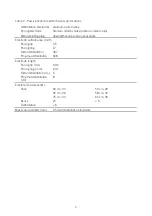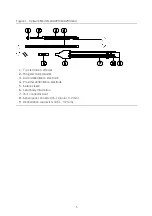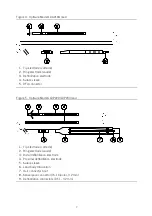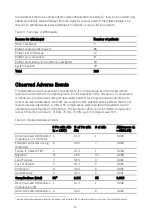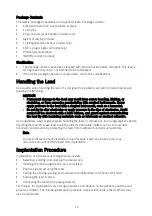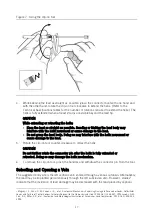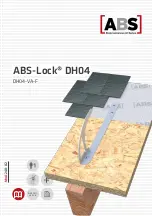
18
vein cutdown or, if a percutaneous subclavian entry is chosen, with a puncture site as lateral as
possible (in the area under the lateral two-thirds of the clavicle, lateral to the subclavius muscle).
The right subclavian vein and the internal jugular vein can also be used.
Inserting the Lead
A vein pick is included in the package to aid in inserting the lead into the vein. Its use is optional
and depends on the implantation technique chosen.
To use the vein pick:
1.
Isolate and open the selected vein with scissors or a scalpel.
2.
Orient the point of the vein pick in the direction the lead will be passed and insert the point
through the incision into the vessel lumen.
3.
Raise and tilt the vein pick gently, and pass the lead tip under the pick into the vein lumen.
CAUTION
Do not use the vein pick for puncturing the vein, dissecting tissue during
cutdown, or manipulating the lead.
Positioning the Active Fixation Lead
Confirm that the helix is completely retracted before implantation. When the helix is completely
retracted, the helix tip might extend slightly beyond the lead tip.
Note
If blood clogs the helix, repositioning may require a greater number of pin rotations to
extend the helix. Repeated repositioning attempts may impair the helix extension
mechanism.
1.
Under fluoroscopic guidance and with the helix retracted, advance the lead into the right
atrium.
2.
To aid in passing the lead through the tricuspid valve and into the right ventricle:
-
remove the stylet from the lead
-
shape the distal end of the stylet into a gentle curve
-
carefully reinsert the stylet into the lead
The flexibility of the lead's distal defibrillation coil allows the distal end of the lead to conform
to the shape of the stylet.
CAUTION
To avoid damage to the stylet and lead, do not attempt to curve the stylet while it
is inserted in the lead. Do not use a sharp object to curve the distal end of the
stylet.
3.
Under close fluoroscopic monitoring, advance the curved lead/stylet through the tricuspid
valve and into the ventricular chamber.
4.
Pull the stylet back a few centimeters to reduce the risk of the lead damaging the valves or
penetrating the heart muscle when it continues down into the ventricle.
5.
Continue to advance the lead. When the tip reaches position in the right ventricle, retract the
stylet an additional ten centimeters or more.
Accurate electrode positioning is vital for stable sensing and pacing. Verify that the lead tip is

